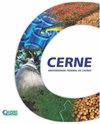Identification of 20 species from the Peruvian Amazon tropical forest by the wood macroscopic features
IF 0.7
4区 农林科学
Q3 FORESTRY
引用次数: 0
Abstract
Background: The biodiversity of the Peruvian Amazon tropical forests is one of the most expressive in the world, with 2500 forest species, although restricted to about 250 tree species used commercially. This species diversity indicates the challenge magnitude for research in taxonomy and timber species identification. Likewise, it implies the complexity of biodiversity conservation and restoration measures, which are directly related to the control of deforestation, cutting and transport of illegal wood. With this objective, the present study describes the macroscopic wood anatomical features in order to identify 20 tree species from Peruvian Amazon Forest, “ Selva Central ”, including an identification key and tree species botanical validation. Results: The wood species are included in 12 families commonly found in the tropical forests of Peru, highlighting the Fabaceae (25%), Moraceae (15%), Podocarpaceae and Lauraceae (10%) families and are sold as timber for several uses and applications in the internal market and for export. The wood species presented common anatomical features, such as diffuse porosity, visible axial parenchyma mainly distinct, and, eventually, with ray storied, e. g : A. cearensis , M. balsamum and M. peruiferum . Conclusion: The tropical tree species identification is possible by analyzing their wood macroscopic anatomical structure. The results can be also applied in the wood trade traceability by controlling deforestation and illegal wood commerce and in proposing policies for biodiversity conservation and sustainable use of natural resources. They constitute, likewise, a database for the recent wood identification methodologies presented in the specialized literature.秘鲁亚马逊热带森林20种木材宏观特征鉴定
本文章由计算机程序翻译,如有差异,请以英文原文为准。
求助全文
约1分钟内获得全文
求助全文
来源期刊

Cerne
农林科学-林学
CiteScore
1.60
自引率
0.00%
发文量
2
审稿时长
6-12 weeks
期刊介绍:
Cerne is a journal edited by the Federal University of Lavras, Minas Gerais state, Brazil, which quarterly publishes original articles that represent relevant contribution to Forestry Science development (Forest ecology, Forest Management, Silviculture, Technology of Forest Products).
 求助内容:
求助内容: 应助结果提醒方式:
应助结果提醒方式:


